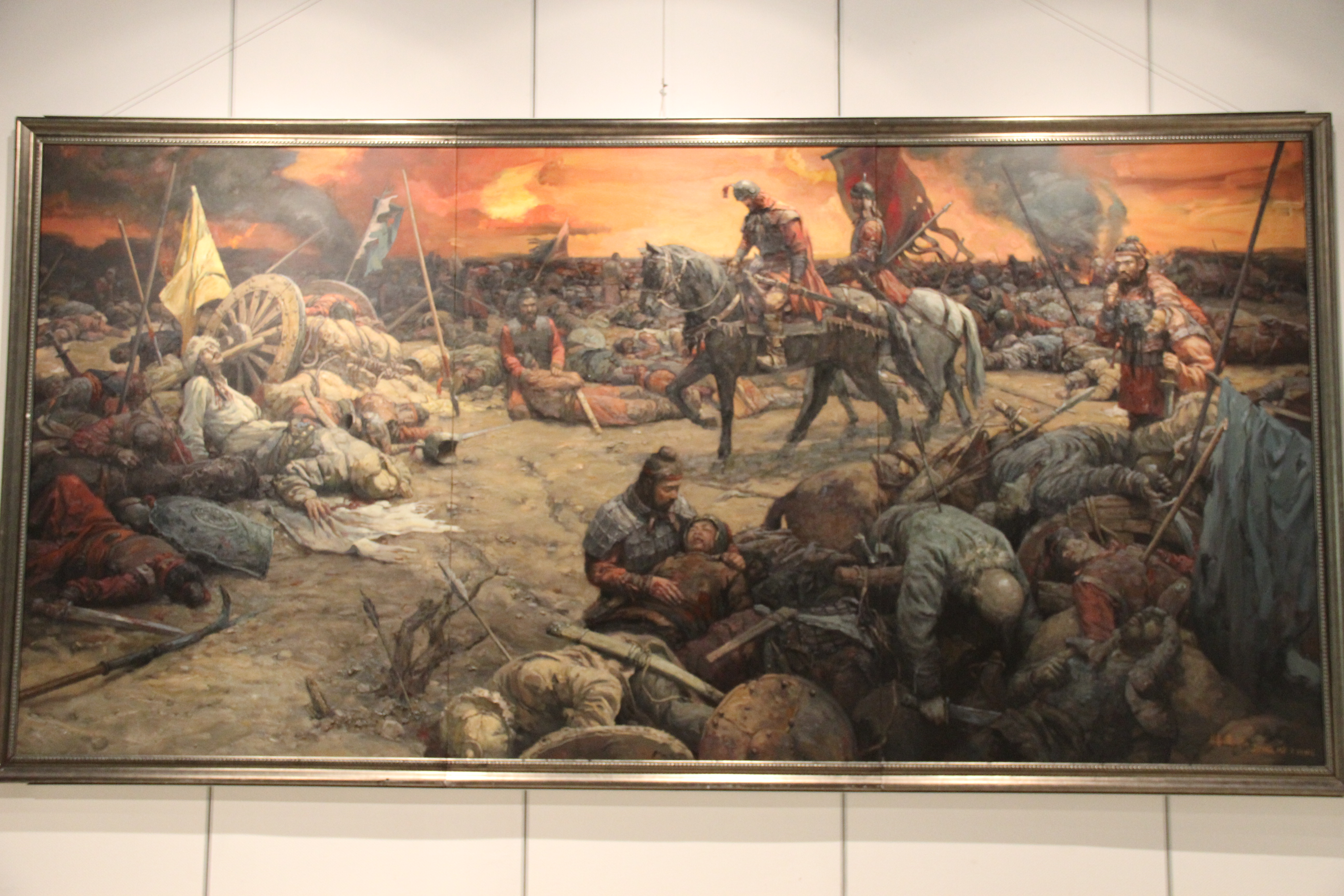The army of Han Emperor Wu defeated by the Huns by unknown artist
"After a quiet period, Emperor Wu traveled to the northern frontier in person in 110 BCE and reviewed a cavalry force of 180,000. He sent envoys to the Chanyu, challenging him either to come south and fight or submit to Chinese authority. The Chanyu ignored him and stayed far away, but in the following years, he sent envoys asking for a return of the old treaty relations: peace in return for Chinese tribute payments. The Chinese demanded that the Chanyu send his son and heir hostages, but he refused. Negotiations broke down in 107 BCE when a Xiongnu envoy died of natural causes while he was in China and the Chanyu blamed the Chinese for his death.
Following a severe winter in 103 BCE, a Xiongnu noble offered to defect with his people, and the Chinese sent a large force to meet them. The Chanyu discovered the plot and killed the noble before he could defect. He surrounded and destroyed the Chinese army, capturing the Chinese general. The following year saw some of the biggest Xiongnu attacks ever recorded on China, with two Xiongnu columns penetrating deep into Chinese territory, capturing thousands of prisoners.
By this stage, the constant campaigning in the north had caused a chronic shortage of horses for Chinese forces. In 99 BCE, General Li Ling attempted to find a way to engage the Xiongnu without cavalry. He took an infantry force equipped with double-shot crossbows and many wagons filled with crossbow bolts. Every time Xiongnu forces tried to engage them, they “circled the wagons” and held the nomads off with crossbow fire. However, they ran out of ammunition before they could get back to Chinese territory, and due to a miscommunication, a Chinese relief force never arrived. The Chinese troops were told “every man for himself,” and only a few made it back."
-China Versus the Barbarians: The First Century of Han-Xiongnu Relations by Jonathan Markley
 |
| The army of Han Emperor Wu defeated by the Huns by unknown artist. Special Exhibit: Xiongnu, Henan Provincial Museum, Zhengzhou. Image from Gary Todd's flickr. |
Source:
Quote:



Comments
Post a Comment